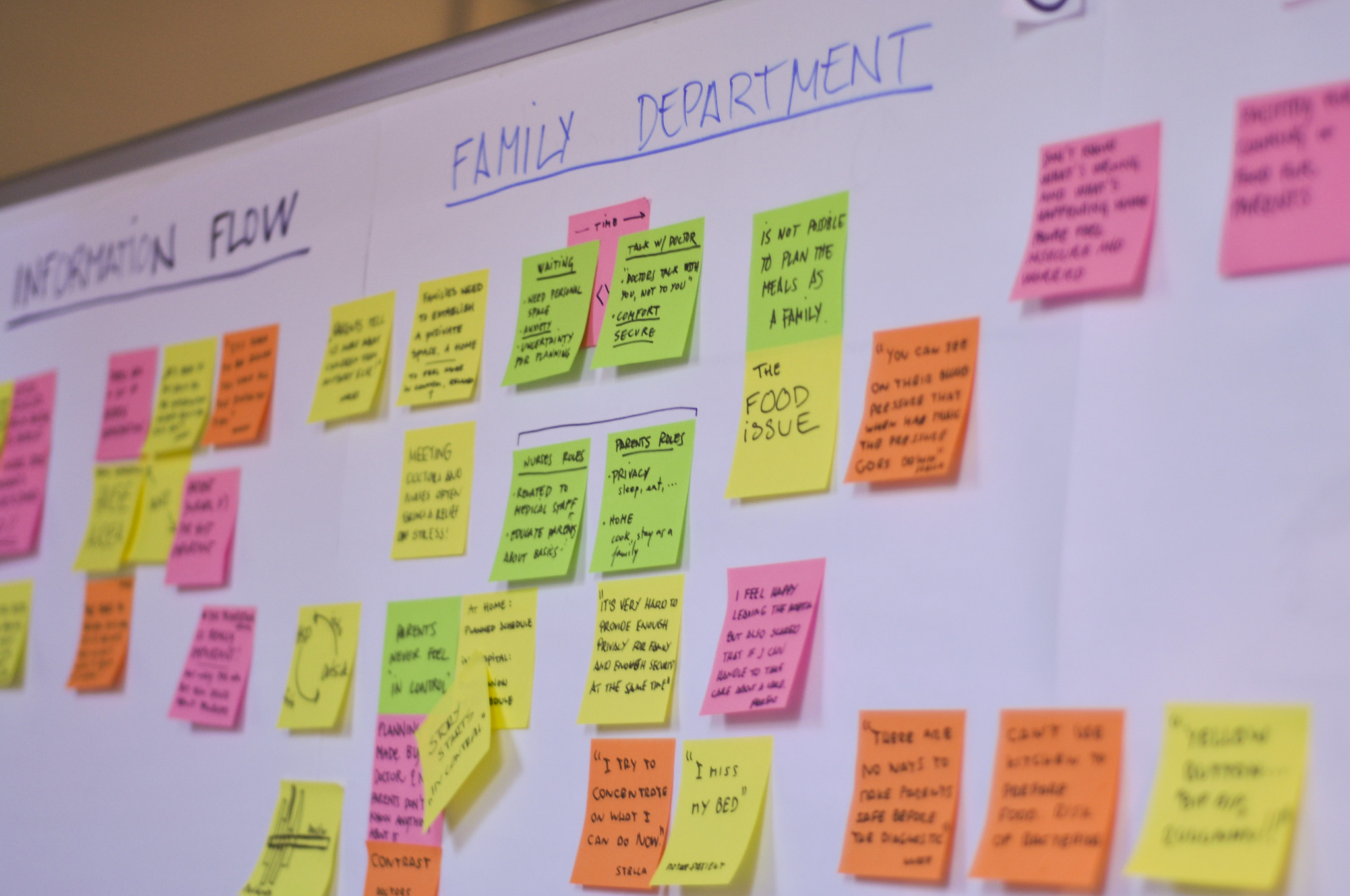Empathy Map: What is it a how to build one? Step by step
What it is and how to make an empathy map for UX
Tonic3 develops and executes strategies that drive profit through Digital Transformation. Practically that means we are built to help clients hone the right strategy, implement the right technology, and build the right long-term capabilities to deliver lasting transformation.
Industries
We believe that effective technology helps people succeed in their daily lives. So we help our clients engineer useful technology for their clients, partners, and employees. That translates to every major industry, but over the years we’ve developed several core areas of expertise.

The UX search application has become popular lately due to its huge usefulness. A complete analysis is offered below, covering everything from its definition to the most basic methods of putting it into practice.
Need To Do a UX Research? Let us help you and show you how you can implement User Research in your company!
UX Research is synonymous with user research. That is, a company, before launching a product on the market, must take the following actions to achieve the commercial success of its new proposal: Target your prospects properly.
It is essential to know in advance the most common age group and the personal tastes of people who may end up buying the product.
%20-%203.jpg?width=626&name=The%20Complete%20Guide%20to%20UX%20Research%20Methods%20(2021)%20-%203.jpg)
Go deep by asking these customers what kind of product they would like to see on the shelf.
Managing this information is essential for business designers and marketing activists to start working on the product design the customer wants.
The immediate answer may seem obvious, but it can sometimes surprise you: because if you create a new product, it is to sell it.
In other words, every new business project is about becoming something essential for someone.
Also, creating a new article knowing in advance what is expected of it is an advantage that should not be lost. It would be like designing something new, but from the point of view of those who will spend their money to buy it, it remains an option as interesting as it is correct.
However, it is also extremely important to test the product before releasing it to the market to detect where the possible errors are and how to correct them.
Putting yourself in the clients shoes to lead as much as possible is almost always the first step towards achieving the above goals.
First, it is important that you stop and think about the aspects for which you need answers:
And most importantly, why do you need to have these questions answered?
In a form of example, yes we want to see how the user downloads an invoice, and because we need to see that the flow has a y direction, on top.
In any case, the user will complete his objective without unnecessary friction to abandon the product.
Even if the company "never" does regular user experience surveys, you probably already have some data to work with: Google Analytics reports, App Store analytics, and more.
Even the workers themselves, who, while likely to have a biased view, will no doubt have heard comments or have their own opinions about the product.
Need To Do a UX Research? Let us help you and show you how you can implement User Research in your company!
The first thing is to distinguish between quantitative and qualitative.
Quantitative information can be measured directly and is objective. On the other hand, the qualitative gives us personal opinions and allows us to know in detail each user and the reason for each action or thought.
It is a qualitative method that allows you to get to know the user personally.
This can be done in person or via Skype. With 5 or 6 interviews, you can get data to start working.
%20-%201.jpg?width=626&name=The%20Complete%20Guide%20to%20UX%20Research%20Methods%20(2021)%20-%201.jpg)
It is advisable to ask open-ended questions and avoid those that allow you to select options or that are too closed, as the latter cause loss of information.
The information to be obtained should cover the situation in which the product will be used, the objective of the potential customer and the reasons why he will use the article or website.
Helps build navigation structures and information architecture. You need some information to get started, such as data obtained through Google Analytics.
It's easy to set up - cut out small paper cards and write product features or content sections of your website or app on them.
Then ask users to organize them into groups.
There are two types of card rating:
Open. Allows the user to create their own groups and name them. It is helpful to understand what users mental models are like and to understand their structure.
Closed (also called inverted or tree test). In this case, the participant must place the cards in pre-defined groups. This method is used when trying to validate a previously defined structure.
You can learn:
It is a direct means of putting what is to be sold into the potential customers hands.
This method studies the user in their environment and finds problems with the "real" use of the application.
%20-%202.jpg?width=626&name=The%20Complete%20Guide%20to%20UX%20Research%20Methods%20(2021)%20-%202.jpg)
In other words, it is up to the user to analyze it, manipulate it, express their opinion and not hesitate to explain how the article can be modified. A panel of five would be more than enough.
Another simpler option is the so-called guerrilla test: it consists of approaching a person (on the street, in a shopping mall, etc.) and asking if he wants to help you. If they allow it, ask them to perform X or Y tasks with the app.
If you do this with 3-5 people, you will soon see if there are any serious usability issues that need to be fixed right away.
You can learn:
It is also possible to ask a potential customer to keep a diary for a period of a week to a month to see what they think about the product, what they expect from it and how they intend to interact with it when it is available.
The contents of the journal should focus on your feelings and problems. So that they don't forget, it is important to define that they must write something every day at certain times.
You can learn:
This is usually one of the most effective ways. A simple Google or Twitter search can reveal what topics everyone is talking about.
You can also use information from forums, Reddit, chats, social networks, Slack community, perform searches on the site itself, etc.
With the online survey, you will quickly get guidance on where the issues are, and once you have a hunch, you can get started with other user experience survey methods to complement the results.
Analyzing this information by age group, in conjunction with research, often results in a much more accurate profile of each customer.
You can learn:
It's as simple as allowing a person to use the website and record their movements with an application.
This information is important to help you identify where there are errors that could slow down the development of the project.
First of all, participants have to be recruited from the target group. Then you have to ask one at a time to perform a specific task or answer questions while using the prototype.
You need to record and document the entire process, both your interactions and your comments.
You can learn:
During this time, all you have to do is show the website to potential customers.
You can quickly analyze what users think of your landing or the brand, what their first impression of the application is or what they understand (or not) at first sight.
They are then asked a survey with simple questions and their answers are analyzed.
The result is almost immediate and can lead to changes or improvements to the visual elements.
Once you are clear on which method(s) you will be using, it is time to define a project schedule, including research.
For example, without counting the production: one week of UX research, three to process the data well, to draw and design conclusions and another to carry out another test (e.g. usability test) and complete the necessary modifications.
When planning your exam, remember to estimate how many people you will need and what materials (programs and tools) will be required.
Do not forget to confirm this with the managers and stakeholders of the project.
Need To Do a UX Research? Let us help you and show you how you can implement User Research in your company!

What it is and how to make an empathy map for UX

The success of a product/service has always depended on how its consumers perceive it.

Testing the user experience often scares business owners and marketers alike. It seems like a daunting task, especially when you have a lot of...